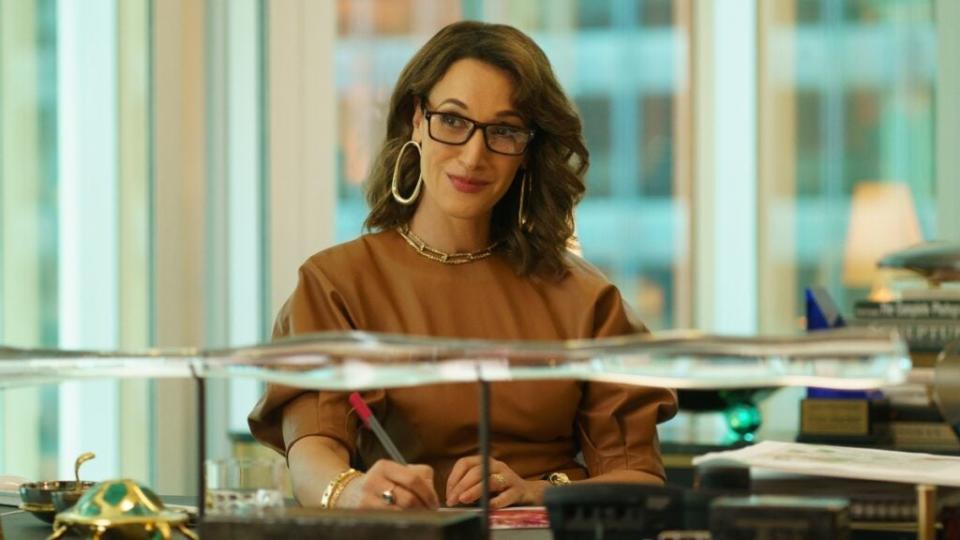‘Luckiest Girl Alive’ Star Mila Kunis Explains Why the Film’s Ending Needed to Be Different From the Book
Note: The following contains spoilers for the “Luckiest Girl Alive” ending. Do not read until after you’ve seen the film.
Just because author Jessica Knoll adapted her own book “Luckiest Girl Alive” for the Netflix movie doesn’t mean she didn’t make some changes — including to the ending.
The story follows Ani FaNelli (Mila Kunis) as she attempts in her own way to reconcile her past with her future by making great strides in both her personal and professional life. In the midst of planning her “lavish but tasteful” wedding ceremony and making preparations to jump ship from her current journalism job at “The Women’s Bible” to “The New York Times Magazine,” Ani gets asked to participate in the filming of a documentary about a deadly school shooting that took place at her prestigious Brentley School.
Kunis’ Ani flashes back to her younger self (who went by TifAni), portrayed by Chiara Aurelia, who not only endured the traumatic situation of a school shooter killing five of her high school classmates, but did so after falling prey to a gang rape by three classmates, two of whom were killed in the shooting and one of whom made it out paralyzed from the waist down.
Also Read:
Here’s What’s New on Netflix in October 2022
Present-day Ani and past TifAni collide in the making of the documentary, from her interviews with the director to her flashbacks and resulting traumatic moments. In an interview with TheWrap, Aurelia described sifting through the layers of the complex character as “finding small little breadcrumbs” that connected her to Kunis.
“I don’t necessarily think there was like one thing at least for me,” she said in a paired interview with Kunis. “I was able to sit down with Mila and Jessica before we ever started filming and just kind of get a grasp an idea of how they saw the character and how they wanted it to be portrayed and kind of just be able to step into that in the best way that we could.”
Kunis acknowledged all of the aspects of Ani’s identity and character, distinguishing the different versions of her that exist in the story. She also highlighted the clashing of Ani’s different selves that creates such a tense dynamic in the film.

“The cool thing about this movie is you get to hear the internal dialogue while you see the external actions, and they don’t always match up,” she said. “It’s like the cool thing about the juxtaposition of it all where you understand her logic. You hear her say it out loud, but she decides to go and do the wrong thing, and it’s really fun to play.”
At the end of Knoll’s novel, Ani comes to terms with her trauma and the ‘reputation’ it gives her for some who will see her differently, like her mother (Connie Britton) and her fiancée Luke (Finn Wittrock) who she ends up leaving before they go through with getting married. She takes the new editor job that her “Women’s Magazine” boss grandfathers her into at “Glow Magazine,” choosing to live a life for herself, and for her past self.
“When Jess and I decided to change the ending, that was the North Star for the character for that moment, that’s kudos to Jess for allowing that to happen,” Kunis said. “Who [Knoll] was when she wrote the book and her North Star when she wrote the book changed when she was writing the script. We were working together and trying to figure out what is that new North Star. The original North Star was irrelevant at this point. We needed to figure out the character’s North Star and the biggest thing that we had to do was to separate Jess from the character.”
At the end of the film, Ani drafts an essay about her own personal history with sexual assault, giving it to her editor to read and ultimately deciding to publish it at The New York Times Magazine after fleshing it out more so that it’s not ‘half-assed’ as her editor first critiques it. She explains her process to Luke, who never seems to be on the same page as her in terms of what she has been through. Ani also gets closure with the surviving classmate who raped her, Dean (Alex Barone), when she secretly records a conversation they have in which he admits that he raped her.
Also Read:
‘Luckiest Girl Alive’ Author Jessica Knoll Says Gang Rape Scene Was Based on Her Life
Knoll’s book was published in 2015, and she has previously said that the gang rape scenes in her book were based on real events that took place in her life.
“I — again, kudos to Jess that she was able to create a character that she wasn’t married to necessarily, and loved and created, but also allowed [director] Mike Barker and I to go and innovate and create a new North Star,” Kunis continued. “So as far as, what’s the North Star for the character, it very much is the ending. It’s the the idea of your inner voice and your outer voice becoming one, which there’s a metaphor behind that but there’s also the literal moment in the movie where that happens.”

The ending is triumphant in more ways than one, especially because Ani follows the advice of her editor LoLo (Jennifer Beals), taking the swing for a more authentic and honest life in revealing what happened to her and shedding the parts of her life that her false self accrued along the way. LoLo tells her to decide, do what she wants and not approximate honesty.
Also Read:
Mila Kunis’ Perfect Life Begins to Unravel in Netflix’s ‘Luckiest Girl Alive’ Trailer (Video)
“It’s just coming to terms with who you are,” Kunis simplified.
“The Luckiest Girl Alive” is now streaming on Netflix.

 Yahoo Movies
Yahoo Movies 
